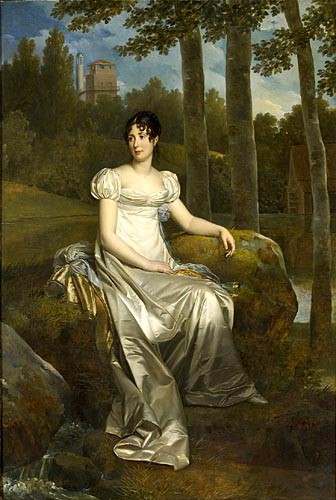The life of Désirée Clary – a most curious individual – was to change forever following the meeting of the Bonaparte and Clary families in Marseille during the Revolutionary period. Despite harbouring no political ambitions, this bourgeois lady from the south of France was eventually obliged to join her husband, Bernadotte (who ascended to the throne in 1818), and assume her role of queen of Sweden and Norway, thereby lending the regime an air of dynastic solidity.
The daughter of a rich Marseillais merchant, Désirée was initially courted by Joseph Bonaparte who – intent on marrying into money – chose instead to focus his attention on her sister, Julie. With Joseph acting as an intermediary, Désirée was presented to Napoleon, to whom she became engaged on 21 April 1795. Shortly afterwards, Napoleon arrived in Paris, and with the indecisive Désirée reluctant to join him in the capital, it was there that the French general met Josephine. Despite breaking off the engagement, he maintained a special devotion to his first love for the rest of his life.
Two years later, Joseph introduced his sister-in-law to General Bernadotte and fifteen days later, on 17 August 1798, they were married in a civil ceremony in Sceaux. In less than a year, Oscar, the couple’s first and only child, was born. Napoleon appointed himself the boy’s godfather, and in an almost prophetic twist, took it upon himself to give the child a Nordic and Ossianic name.
This portrait – one of the most seductive that Gérard completed – presents the young lady in a most flattering light: although described as small and plump, her southern character was apparent in her large dark eyes and her thick, curly brown hair which she insisted must always be styled with sophistication. A cheerful character never without a smile on her face, she was known for her flirtatious and elegant nature.
In this painting, Désirée is depicted without adornment and wearing a simple silk robe. She is surrounded by the idyllic greenery of Mortefontaine Park, a stopover point between Paris and Compiègne where she liked to wander and meet her sister, Julie. The estate, which Joseph Bonaparte purchased in 1798, quickly became the country retreat par excellence for Paris’ imperial socialites.
Although Bernadotte was elected crown prince of Sweden in 1810, Désirée – who assumed the title of Comtesse du Gotland – did not immediately join him. Unaccustomed to the cold climate and reluctant to join her husband at the court in Stockholm, which she considered austere and dull, she remained in Paris, where she became known as “Bernadotte’s little spy”. Every spring a hopeful court awaited her arrival in Sweden, but by now a new factor had intervened: Désirée had fallen madly in love with the Duc de Richelieu, a minister to Louis XVIII, and each time she put off her departure for another year. Finally, in 1823, following her son’s marriage to Josephine de Leuchtenberg, she made the decision to join her husband, taking the official court name of Desideria. Her eventful life and eccentric character have inspired a number of films, including most notably Sacha Guitry’s “Le destin fabuleux de Désirée Clary”, released in 1942.
Hélène Meyer (tr. H.D.W.)
Musée national du Château de Compiègne
Curator, “Destins souverains. Napoléon Ier, le Tsar et le Roie de Suède”
November 2011


